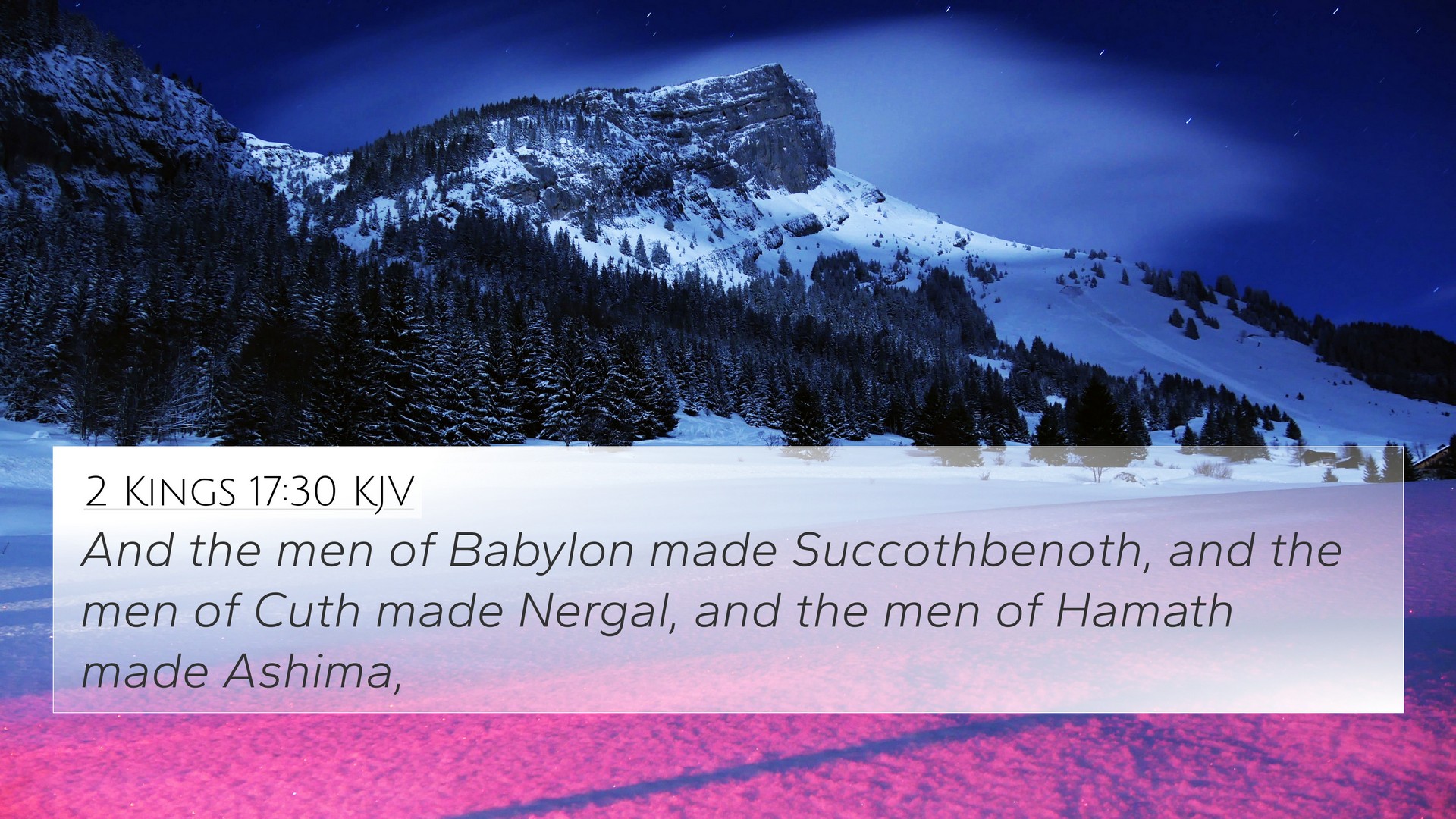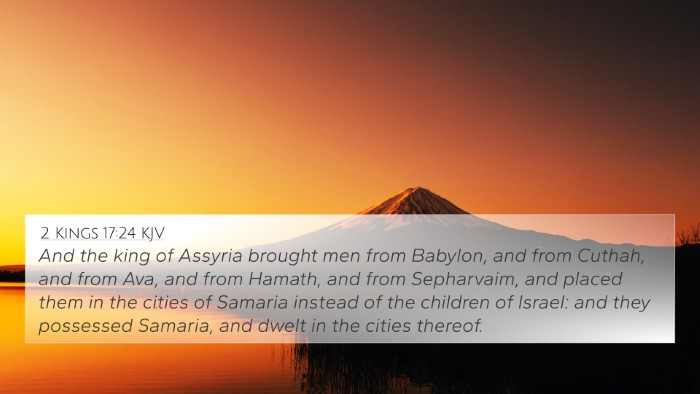Understanding 2 Kings 17:30
Verse: 2 Kings 17:30 – “And the men of Babylon made Succoth-benoth, and the men of Cuth made Nergal, and the men of Hamath made Ashima.”
Summary of Meaning
This verse presents a glimpse into the religious practices of the nations that were settled in Israel after the Assyrian conquest. Specifically, it illustrates how these people introduced their idol worship into the land, which signifies a blending of cultures and religions. Through a comparative analysis, we can observe how these names of deities reflect the broader theme of syncretism in ancient Israel.
Insights from Commentaries
-
Matthew Henry:
Henry emphasizes the danger of allowing foreign influences to corrupt true worship. The creation of new shrines dedicated to these idols signifies a departure from the worship of Jehovah, raising a stark warning about the potential consequences of societal assimilation.
-
Albert Barnes:
Barnes elucidates that the deities mentioned were commonly worshiped idols of the nations; therefore, their introduction served as a form of rebellion against God. By mentioning these specific gods, it highlights the stark contrast between Israel and the kingdoms around it, which had deviated from true worship.
-
Adam Clarke:
Clarke interprets these new forms of worship as indicative of the spiritual decay within Israel. He notes the significance of naming the idols, which reveals the folly of turning away from the true God. This practice signifies spiritual apostasy and the impact of surrounding pagan cultures on Israelite faith.
Cross-Referencing Biblical Texts
To further understand 2 Kings 17:30, we can analyze its connections with other scriptures. Here are several relevant cross-references:
- 1 Kings 12:28-30: The establishment of golden calves in Bethel and Dan as a direct rejection of true worship.
- 2 Kings 17:16: The Israelites forsook all the commandments of the Lord and made molten images.
- 2 Chronicles 36:14: A description of the apostasy of Judah, which parallels the spiritual decline seen in Israel.
- Jeremiah 2:11: God’s indictment against Israel for exchanging their glory for that which does not profit.
- Ezekiel 23:4: The metaphoric representation of Samaria and Jerusalem as women unfaithful to God, paralleling the acceptance of foreign gods.
- Isaiah 1:29: A warning against those who worship in gardens and among the shrines, indicating idol worship.
- Amos 5:26: The mention of the star of your god Rephan and the figures you made to worship, reinforcing the theme of syncretism.
Thematic Connections
This verse is also illustrative of broader themes in the Bible, including:
- Idolatry: The consistent struggle of the Israelites against the lure of surrounding nations and their gods.
- Apostasy: The pattern of turning away from God’s commands, leading to national turmoil and spiritual decline.
- Judgment: The consequences that stem from forsaking God, as seen throughout the prophetic literature.
Applications for Bible Study
For contemporary readers and those engaging in cross-referencing Bible study, consider the following:
- Utilizing a Bible concordance to identify where similar themes of idol worship appear in both the Old and New Testament.
- Employing cross-reference tools to discover how 2 Kings 17:30 relates to the core narrative of Israel's faithfulness.
- Examining comparative studies of Pauline epistles where Paul warns against idolatry and calls for purity of worship.
Conclusion
2 Kings 17:30 serves as a potent reminder of the consequences of syncretism and the integration of foreign idol worship within the Hebrews' faith practice. The textual connections with other scripture emphasize the ongoing theme of fidelity versus infidelity to God, encouraging believers to examine their own lives for potential influences that detract from authentic worship.



